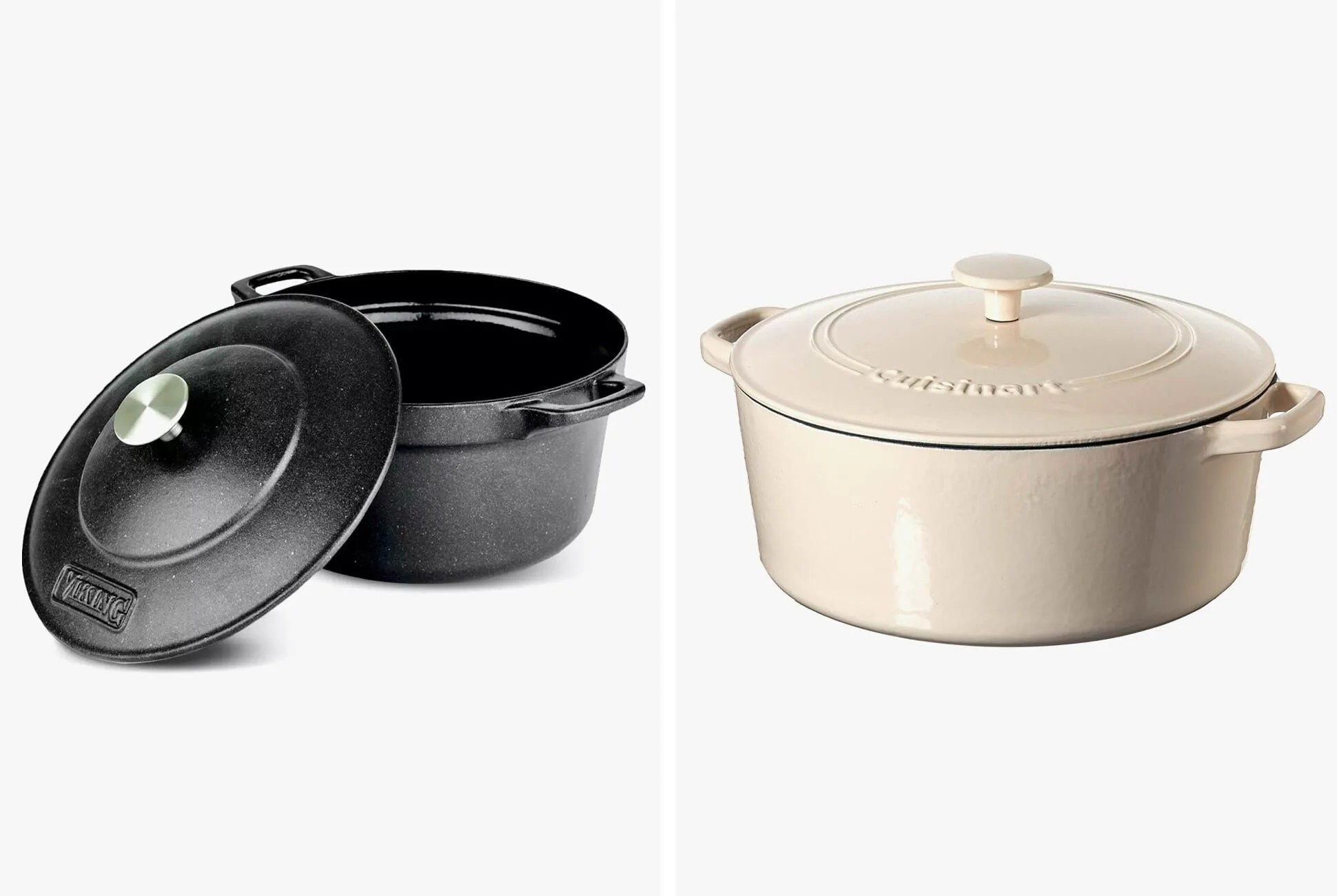The world of Dutch ovens has been thoroughly dominated by the French for decades. Though their cast-iron pots look and cook differently, Le Creuset and Staub are the undisputed masters of the Dutch oven domain.
But not everyone feels comfortable spending $300 or more on a pot. And what’s really the difference between more affordable options and the Le Creusets of the world? If you buy a more reasonably priced option, like Viking’s blacked-out oven or Cuisinart’s well-reviewed 7-Quart (both of which are deeply discounted today), what are you losing out on? There are three things that factor into Dutch oven performance, and only one of them matters when it comes to the long-term health of a new Dutch oven.
How Does the Lid Fit?
Every Dutch oven’s lid fits differently and, seeing as much of what a Dutch oven is good at cooking requires long cook times, the lid fit is of paramount importance. When we tested Staub and Le Creuset for moisture retention, there were serious differences in the amount of water that boiled out of both. Moisture retention is an indicator of what the oven will be better at than other ovens — the Le Creuset allows much more moisture to leave the oven, meaning it’s likely to be a better pot for braising and reduction. The Staub is significantly better at keeping water in, making it great for stews and the like, and so on. Read reviews to figure out which is best for you.
How Well Does it Hold Its Heat?
This is all about the weight of the Dutch oven. The heavier it is, the better it’s going to hold its heat — that’s heat capacity, insulative value and thermal mass at work. Basically, you want a heavier Dutch oven if you want to heat it up and put it in the oven (or around a campfire) to keep warm longer and you don’t mind if it’s going to take longer to heat all the way through. Lighter ovens heat more quickly and simpler to move around, but they’re more prone to temperature changes.
How Good Is the Enameling?
This is what separates a great Dutch oven from the field. Le Creuset and Staub have made their names with stories of grandmothers passing down decades-old pots to grandchildren on their wedding days. It’s the one thing you can’t test for it quickly or by looking at product specs, because it’s all about longevity. No matter what oven you buy — but especially if it’s slightly cheaper — don’t run it under cold water when it’s still hot, don’t use metal kitchen tools when cooking in it and don’t wash it in the dishwasher. Do these three things and there’s a good chance your frugal Dutch oven will last as long as the best of them.
Note: Purchasing products through our links may earn us a portion of the sale, which supports our editorial team’s mission. Learn more here.

